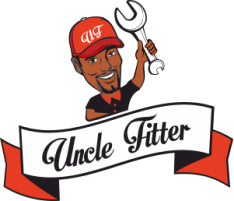Oil Cooler Lines Replacement
What are the Oil Cooler Lines all about?
You won’t find oil cooler lines on all engines. They’re more prominent on supercharged and turbocharged engines, as well as on larger engines that require extra oil cooling, such as older full-sized SUVs. These lines run to an oil cooler, which works a lot like your car’s radiator, allowing air to remove excess heat before the oil is sent back into the engine. In most of these instances, the oil cooler lines will be solid metal tubes because the oil is pressurized, though some have reinforced rubber hose sections as well. If the oil cooler lines are leaking, the oil level can drop quickly, causing possible internal engine damage.
Keep in mind:
- Oil cooler lines are pressurized when the engine is operating, and pressure can remain in the lines even after the engine is turned off.
- Leaking or clogged oil cooler lines can compromise the operation and safety of your engine.
- It may be wise to replace both the oil cooler lines and the fittings. Some lines are actually connected to the fittings, so replacement is mandatory.
- If the lines go to an oil cooler, it may be necessary to replace the oil cooler as well, particularly if the damage is due to debris buildup.
How it's done:
- The vehicle is allowed to cool. The vehicle is raised and secured on jack stands. A drain pan is placed under the oil cooler lines.
- The two oil cooler clamps and lines are disconnected and the excess oil is allowed to drain. The defective oil cooler lines are removed from the oil filter housing and removed from the vehicle.
- The new oil cooler lines are installed to the oil filter housing and secured with new clamps. The two oil cooler lines are connected and secured with new clamps to the oil cooler.
- The vehicle is started and checked for oil leaks then lowered off of the jack stands. The oil level is checked and topped off with the correct oil.
- The vehicle is road tested for proper operation and the cooler lines are rechecked for any signs of leakage.
Our recommendation:
We recommend that you follow your automaker’s recommendations on oil changes and oil cooler service. There is no set lifespan for oil cooler lines, and a properly maintained engine will never need to have them replaced. Inspection by one of our expert mechanics for proper operation, obstruction or deterioration is recommended.
What common symptoms indicate you may need to replace the Oil Cooler Lines?
- Leaking oil around the oil cooler line fittings
- Bends, crimps or damage to the lines
How important is this service?
Because engine oil is a vital consideration for multiple components, replacing damaged, worn or clogged oil cooler lines is essential. Work with our professional mechanics to ensure safety, the right parts, and a proper diagnosis of both the cause and the extent of the damage.
How can we help?
Tell us what the problem is (e.g the car is not starting or I need new shock absorbers). What kind of car you drive and your contact information.
© 2025 Uncle Fitter All rights reserved.



